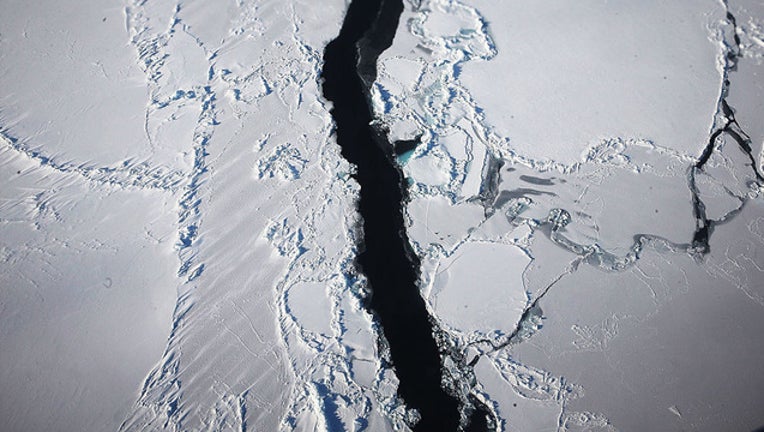Scientists say a massive iceberg has broken off in Antarctica

Ice floats near the coast of West Antarctica as viewed from a window of a NASA Operation IceBridge airplane on October 27, 2016 in-flight over Antarctica. (Photo by Mario Tama/Getty Images)
LONDON (AP) - A vast iceberg with twice the volume of Lake Erie has broken off from a key floating ice shelf in Antarctica, scientists said Wednesday.
The iceberg broke off from the Larsen C ice shelf, scientists at the University of Swansea in Britain said. The iceberg, which is likely to be named A68, is described as weighing 1 trillion tons (1.12 trillion U.S. tons).
The process, known as calving, occurred in the last few days, when a 5,800-square-kilometer (2,240-square-mile) section broke away. Researchers are watching closely to see whether climate change is affecting the phenomenon.
"We have been anticipating this event for months, and have been surprised how long it took for the rift to break through the final few kilometers of ice," said Adrian Luckman of Swansea University. "We will continue to monitor both the impact of this calving event on the Larsen C Ice Shelf, and the fate of this huge iceberg."
NASA and European Space Agency satellites have been monitoring the shelf -- offering dramatic pictures of the break that heightened interest beyond the scientific community. The final break was first revealed in a thermal infrared image from NASA's Aqua MODIS satellite instrument.
Researchers from the U.K.-based Antarctic project, MIDAS, have been monitoring the rift in Larsen C for years, following earlier research on the collapse of the Larsen A shelf in 1995 and the break up of the Larsen B shelf in 2002.
The project, which is investigating the effects of a warming climate through a combination of fieldwork, satellite observation and computer simulation, describes the iceberg as one of the largest ever recorded.
They researchers suggest the iceberg is likely to break into fragments and say that while some of the ice may stay nearby for decades, parts of it may drift north into warmer waters. But researchers say much more study needs to be done to determine the cause.
"At this point it would be premature to say that this was caused by global warming," said Anna Hogg of the Centre for Polar Observation and Modelling at the University of Leeds.

